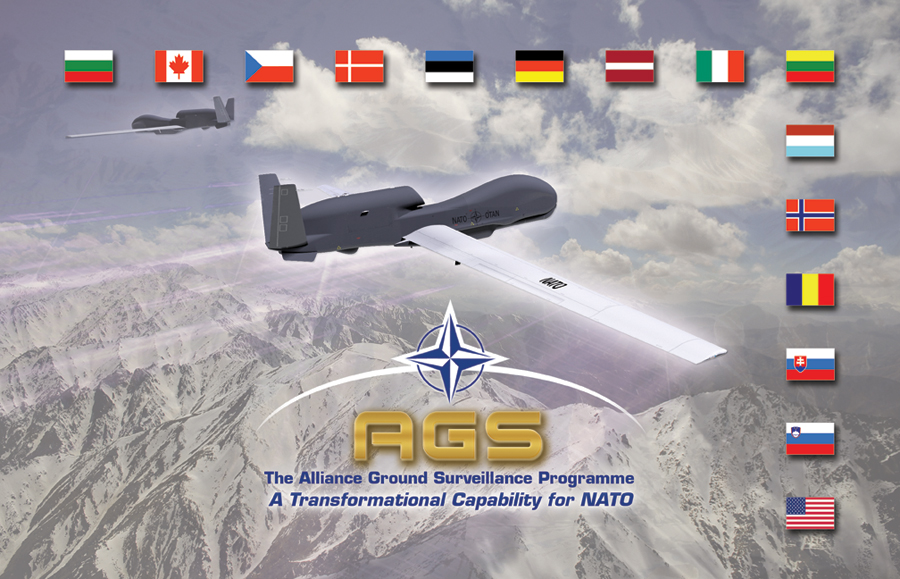
From Ben Iannotta and Tom Withington, Defense News: NATO’s 2011 air war over Libya was fresh on the minds of NATO officials in Chicago when they signed a $1.7 billion agreement with Northrop Grumman for five radar-equipped Global Hawks to be known as the Alliance Ground Surveillance system.
The unmanned AGS planes will carry radars for tracking vehicles and producing cloud- and dust-free terrain images — capabilities that were valuable in the Libya operation, which called for protecting civilians from Moammar Gadhafi’s ground forces. In Libya, ground surveillance was provided by American Joint Surveillance and Target Attack Radar System aircraft and Global Hawks, supplemented by a single British Sentinel-R1 plane.
Even before the Libya operation, advocates were working to convince NATO members to kick in funds to buy radar-equipped Global Hawks that would be maintained and flown directly by the alliance. Advocates of AGS saw the reliance on the U.S. as risky because the country’s planes could be needed elsewhere.
Most of the attention was on procuring the airframes as one of the flagships of the alliance’s Smart Defence initiative, which aims to get more out of available defense spending through multinational cooperation. Fourteen of NATO’s 28 members have signed on to fund AGS: Bulgaria, the Czech Republic, Denmark, Estonia, Germany, Italy, Latvia, Lithuania, Luxembourg, Norway, Romania, Slovakia, Slovenia and the United States. The planes will be owned and operated by the entire alliance, however. . . .
“I think Chicago showed that we can deliver,” said Elizabeth Sherwood-Randall, senior director for Europe on the U.S. National Security Council, speaking at the Atlantic Council May 24. . . .
During the run-up to the summit, a group of NATO ambassadors lobbied NATO Secretary General Anders Fogh Rasmussen to highlight the need to embed the AGS aircraft in a Joint ISR initiative.
When the defense declaration was released May 20, it said: “We are deploying a highly sophisticated Alliance Ground Surveillance system, so that our forces can better and more safely carry out the missions we give them; in this regard, a number of Allies have launched an important initiative to improve Joint Intelligence, Surveillance and Reconnaissance more broadly.”
Because of the complexity of radar data, the standards alone won’t be enough, [ISR technologist Joe] Ross said. Members need to make sure the AGS processing cells are staffed with enough analysts — possibly as many as 300 in total at four sites.
“That’s quite a lot of staff. I mean, you’d be hard-pressed to find 300 analysts that are available in the world right now. So there’s a lot of training that has to go on,” he said. “Most of them that are capable of doing this kind of job are doing it already for the U.S. and U.K. . . .”
The AGS includes three components: air, ground and support segments. The air segment comprises the five RQ-4B aircraft and their ground control stations. The ground segment consists of both mobile and transportable ground stations, which will be able to obtain radar imagery transmitted by the Global Hawk’s communications links and the analytical tools that can be used by intelligence experts to interpret the radar imagery. The support segment will be based at Sigonella and will be responsible for performing maintenance, repair and overhaul for the aircraft. (graphic:Northrop Grumman)
Image: nato%203%2017%2011%20NATO%20UAV.jpg
